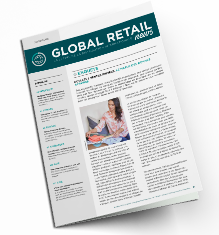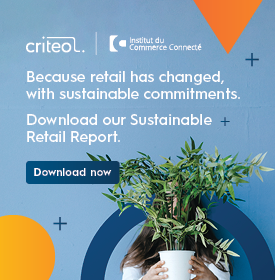Social network selling: are we hooked?
Conversation on WhatsApp, Shopping via Instagram… Consumers were in touch with brands during the Covid-19 on Social Media. As a new channel of influence and loyalty to brands, social media revenue through Social Selling cannot be ignored.

Sealed at home during the lockdown, Clarins customers didn’t care about make-up, but still sought advice on skin care and how to reduce stress, according to Hootsuite, which offers network monitoring solutions. The cosmetics retailer (estimated turnover: €1.35 billion and 58 own stores worldwide) duly adapted content for social networks. Daily posts on Instagram provided tips from beauty coach Rebecca Jones but without any additional spending, explains Deborah Holloway, Digital Media Director. Faced with the electroshock of Covid-19, the retailer quickly adjusted to better communicate directly with empathy (launch of Clarins&Me personalised consultations) and to take care of customers.
Like Clarins, many retailers can measure the reactivity and market value of Facebook and emulators (Twitter, Pinterest, Instagram, TikTok, WeChat) during the Covid-19 crisis. “This is where the audience lives. Consumers are devoting more and more time to it. Moreover, they have perfectly integrated social media into their purchasing process”, explains Sandrine Plasseraud, President of the agency We Are Social in France. More than 50% of the global population of 3.96 billion people use these networks, according to the Digital Report by We Are Social and Hootsuite, released in July 2020. Internet users (aged 16 to 64 years old) devote an average of more than 2h24 every day to these networks. “Messengers such as WhatsApp or Facebook Messenger also play a crucial role during any lockdown”, stresses Christophe Huck, founder of Helmut Agency.
It’s time for classical retailers to get involved in Social Selling, declared Plasseraud. This uses all the multiple business levers of social networks. These include traffic generation on e-commerce websites, customer acquisition via recommendations and brand ambassadors, co-creation with communities, customer loyalty and customer relations, integrated transactions (payment in app, gaming) and fresh product pre-testing via new immersive media (virtual reality and augmented reality filters).
Many of the world’s leading brands already stand out for their high profile on social media for sport, luxury, fashion, beauty or food service. Puma, for example (turnover of €5.5 billion in 2019 with 853 stores) is displayed on Twitter, Instagram, YouTube, Facebook, Wechat, Tencent QQ, Weibo and Youku, with a plethora of star ambassadors! The Digital Native Vertical Brands (DNVB) like Glossier (created 10 years ago by the American Emily Weiss with a blog and federation of faithful beauty lovers) take advantage of this breeding ground to build more success and challenge established brands already with physical networks. It’s not too late to start “imagining customer itineraries adapted to the platform influence strategies and innovations”, according to We Are Social.






